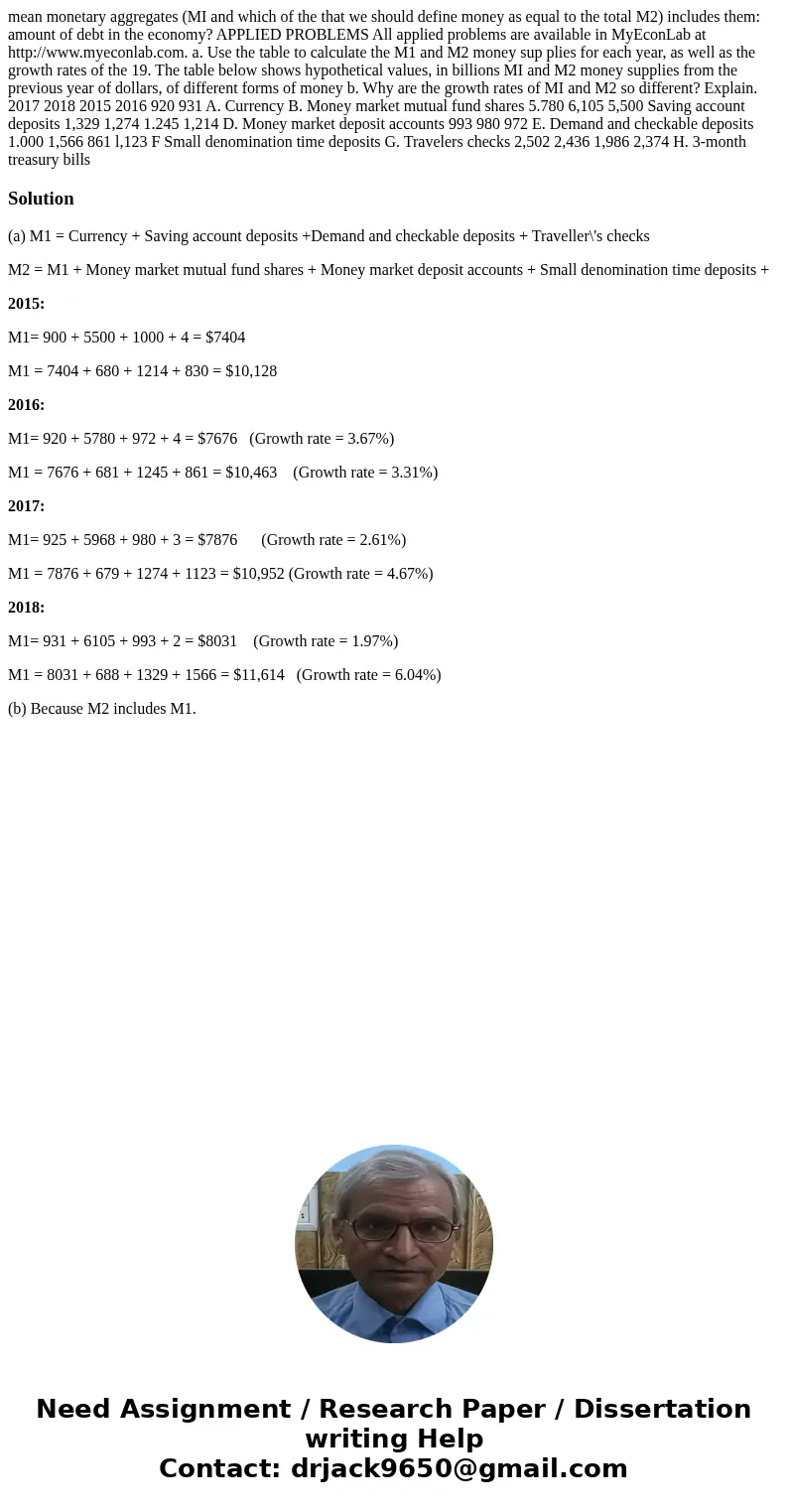mean monetary aggregates MI and which of the that we should
mean monetary aggregates (MI and which of the that we should define money as equal to the total M2) includes them: amount of debt in the economy? APPLIED PROBLEMS All applied problems are available in MyEconLab at http://www.myeconlab.com. a. Use the table to calculate the M1 and M2 money sup plies for each year, as well as the growth rates of the 19. The table below shows hypothetical values, in billions MI and M2 money supplies from the previous year of dollars, of different forms of money b. Why are the growth rates of MI and M2 so different? Explain. 2017 2018 2015 2016 920 931 A. Currency B. Money market mutual fund shares 5.780 6,105 5,500 Saving account deposits 1,329 1,274 1.245 1,214 D. Money market deposit accounts 993 980 972 E. Demand and checkable deposits 1.000 1,566 861 l,123 F Small denomination time deposits G. Travelers checks 2,502 2,436 1,986 2,374 H. 3-month treasury bills 
Solution
(a) M1 = Currency + Saving account deposits +Demand and checkable deposits + Traveller\'s checks
M2 = M1 + Money market mutual fund shares + Money market deposit accounts + Small denomination time deposits +
2015:
M1= 900 + 5500 + 1000 + 4 = $7404
M1 = 7404 + 680 + 1214 + 830 = $10,128
2016:
M1= 920 + 5780 + 972 + 4 = $7676 (Growth rate = 3.67%)
M1 = 7676 + 681 + 1245 + 861 = $10,463 (Growth rate = 3.31%)
2017:
M1= 925 + 5968 + 980 + 3 = $7876 (Growth rate = 2.61%)
M1 = 7876 + 679 + 1274 + 1123 = $10,952 (Growth rate = 4.67%)
2018:
M1= 931 + 6105 + 993 + 2 = $8031 (Growth rate = 1.97%)
M1 = 8031 + 688 + 1329 + 1566 = $11,614 (Growth rate = 6.04%)
(b) Because M2 includes M1.

 Homework Sourse
Homework Sourse